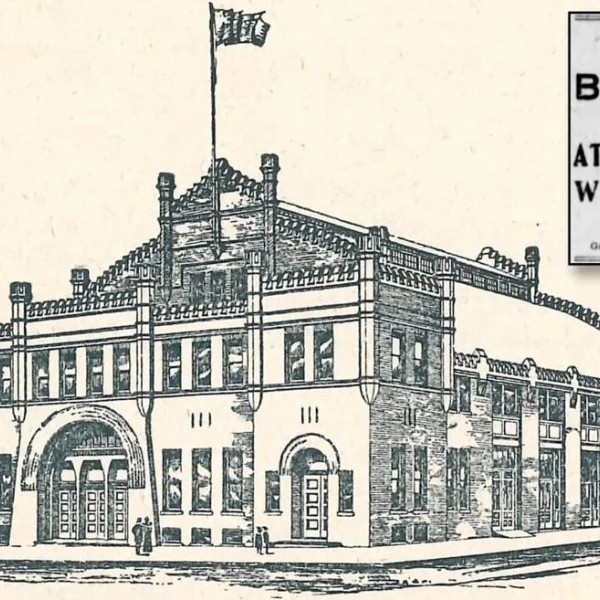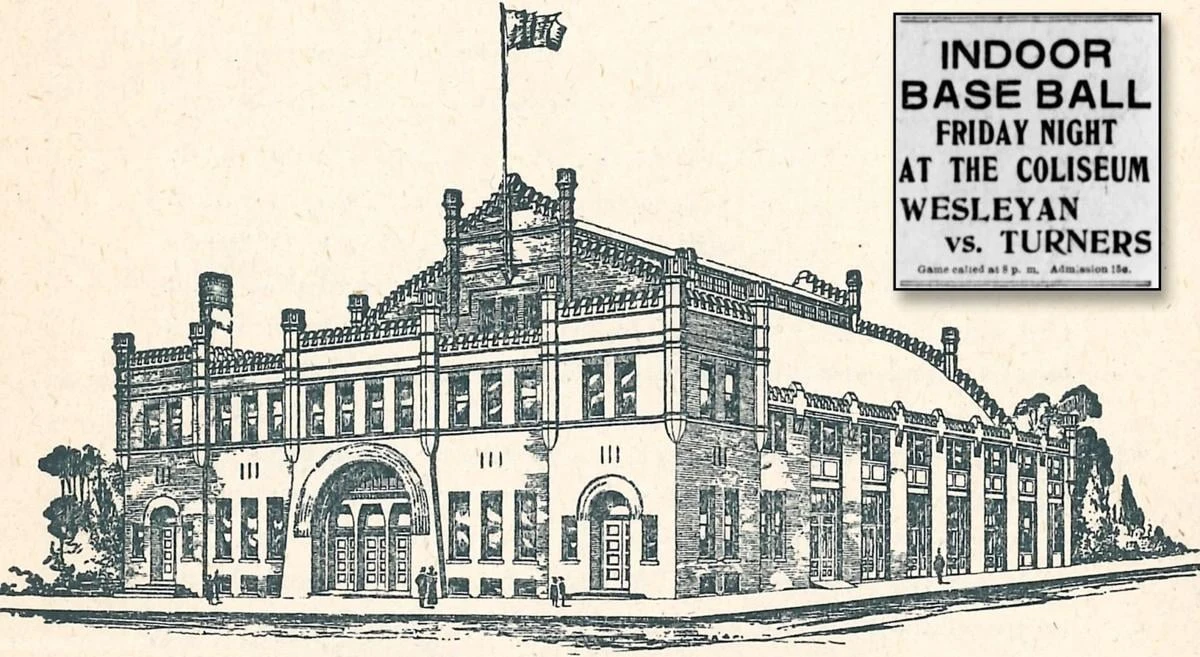Part of baseball’s attraction as the National Pastime is the sport’s inextricable connection to the rhythm of the seasons—how it begins in the springtime when life holds boundless promise, and how it ends in the autumn chill with, more often than not, broken dreams.
“It breaks your heart. It is designed to break your heart,” the late Baseball Commissioner A. Bartlett Giamatti famously said of the game. Ballplayers, after all, are wistfully known as the “boys of summer” for those same reasons.
Yet though mostly forgotten today, when it came to baseball in the late 19th and early 20th century, there were also the “boys of winter.” At the time, “indoor baseball,” which was played during the winter months with a squishy, oversized ball as big as 17 inches round, proved popular in cities and towns across the nation.
“Indoor baseball comes in at a time when athletic sports are at a low ebb,” observed The Pantagraph back in late 1901. “Football closes Thanksgiving, and there is but little doing in an athletic way until the baseball season opens up in the spring, unless the time is filled in with the indoor article of ball.” Basketball, let it be noted, was still in its infancy, and would not become a dominant cold-weather sport for a few more decades.
The indoor game has its own creation story, though whether it’s an exercise in pure mythmaking along the lines of Abner Doubleday “inventing” baseball in a cow pasture in Cooperstown, NY, this author cannot say! Anyway, the story goes that on Thanksgiving Day 1887, at the Farragut Boat Club on Chicago’s south side, George Hancock and other Ivy League alumni awaiting the results of the annual Harvard-Yale gridiron clash, passed the time by inventing and playing an indoor version of baseball. They did so by taping up a boxing glove and using some sort of stick as a bat.
And viola! The game of indoor baseball—also known as playground or “mush” ball—was born. The game quickly spread across the Windy City and beyond.
In the late 1800s, Bloomington’s National Guard unit, Company D of the 5th Regiment, fielded the only organized, equipped and competitive local indoor baseball club. It helped that the National Guard armory on the 300 block of South Center Street in the warehouse district offered enough space to play the new winter sport (Many readers will remember when this building collapsed in a cascading shower of bricks in July 2011).
On May 10, 1898, during the early days of the Spanish-American War, the 5th’s regiment-wide indoor baseball club faced off against the First Regiment’s “nine” (as teams were often called) at Camp Tanner on the state fairgrounds in Springfield. The 5th Regiment, featuring several Co. D boys from Bloomington, held their own in an 8-8 tie at the fairgrounds’ Machinery Hall.
The Bloomington Coliseum, which opened in December 1898, was the city’s premier venue for indoor baseball (see accompanying illustration.) Designed by German-born and Bloomington-based architect Paul O. Moratz, the Coliseum’s framework of arching trusses eliminated the need for columns and rafters, creating a cavernous, armory-like hall with a ceiling nearly 60 feet in height.
On Feb. 5, 1902, the Coliseum hosted the indoor baseball “championship of Central Illinois,” a 10-5 victory by the visiting Delavan Stars over the hometown Baldwins. “Several hundred witnessed the exhibition and it was fully as exciting as any game of the outdoor variety,” reported The Pantagraph. “It is safe to say that indoor baseball will be the rage here next season and be largely attended. There is some talk now of organizing a league in this city.”
Indeed, Twin City residents put together an indoor baseball league of one sort or another in most years during the early decades of the 20th century. For the 1907-1908 season, for example, the municipal league featured four teams—Company D of the National Guard, the Knights of Columbus, the Olympics and the Turners, the latter representing the well-established German-American athletic and social club. The league’s opening day, Dec. 13, 1907 at the armory, drew 250 spectators, with the Turners putting the hurt on the Knights of Columbus 22-11, followed by an 8-7 Olympics victory over Company D.
On March 17, 1908, the Olympics clinched the league title, defeating the Knights of Columbus 10-2 before “500 of the noisiest people in the world” at the Coliseum. Admission for the championship game was 15 cents, or the equivalent of more than $4 in 2018 inflation-adjusted dollars. “The spectators,” stated The Pantagraph, “went out of their way to bring fiendish instruments for making an outlandish clamor.” The cacophony included someone banging on a wash boiler, as well as “hundreds of horns and megaphones.” A howling dog even got into the act.
The dedication in June 1908 of the YMCA building at the southeast corner of East and Washington streets in downtown Bloomington gave indoor baseball enthusiasts another local “ball field.” The “Y” featured a large gymnasium with balcony seating and a high enough ceiling to accommodate both amateur circus shows staged by locals and the community of trapeze performers who wintered in the Twin Cities.
Indoor baseball remained popular into the Roaring Twenties. In the winter of 1922-1923, the “Knife and Fork” league (games were played over the lunch hour) featured seven indoor baseball teams—the American Legion, Consistory, Knights of Columbus, Knights of Pythias, Lions, Rotary and the Young Men’s Club. Games were played at the YMCA.
The “luncheon league” season ran from December to the end of February. On Feb. 27, 1923, the Consistory nine topped Rotary 5-1 to claim the league’s championship pennant. The Consistory’s pitcher, Bloomington attorney Harold Hulse, “was in rare form all evening,” related The Pantagraph, holding Rotary to five hits while issuing only one walk. He also sent eleven batters back to the dugout “for a drink of water” (that is, they struck out!)
In the early spring of 1930, the YMCA organized an indoor baseball league with a six-week season. “Indoor baseball has always been popular here and a good list of entries is expected for the loop,” noted The Pantagraph of March 25. By the following season, in January 1931, there were at least five teams in a youth league, including those from Victory Hall, a boy’s home in Normal, and the Western Avenue Community Center.
Yet as basketball became the wintertime team sport of choice, the popularity of indoor baseball declined accordingly. Even so, a form of the indoor sport survives today as outdoor 16-inch softball, which remains popular in the Chicagoland area.

